
Today’s topic is one of my favorites—senko hanabi !
On a quiet summer night, a small spark blooms in your hand—that’s Senko Hanabi, Japan’s most delicate handheld firework.
While booming fireworks lighting up the sky are exciting, there’s something uniquely peaceful about the soft flicker of Senko Hanabi.
This tiny firework is not only deeply rooted in Japanese tradition, but it’s also probably the most familiar type of toy firework for many Japanese people.
Whether you’re enjoying it solo or with someone special, Senko Hanabi offers a short but meaningful moment of beauty and reflection.
In this article, we’ll dive into the origins, charm, and unique stages of this quiet summer tradition. If you’ve never experienced Senko Hanabi before, or even if you have, there’s always something new to discover in its flickering flame.
What Is Senko Hanabi?
Senko Hanabi is a type of traditional Japanese sparkler.
The name literally means “incense stick firework,” and it originated from the way people used to stick it into ash—just like incense—to enjoy it.
Born in 1608: A Firework With History
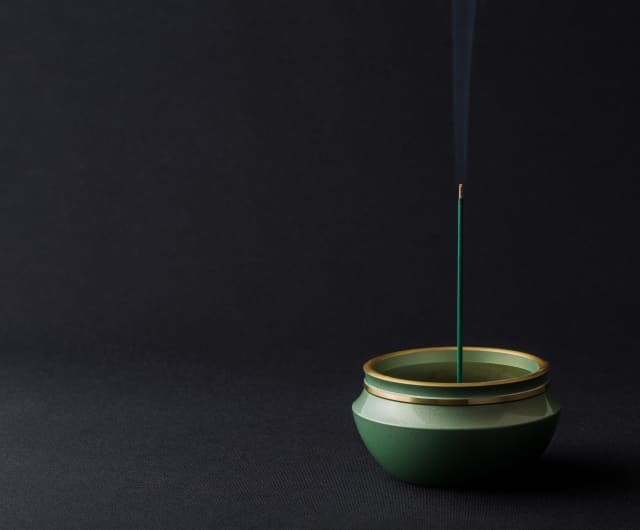
Senko Hanabi first appeared in 1608 during Japan’s early Edo period.
Back then, people would light the firework and stand it upright in a censer filled with ash. The way it looked—standing straight and burning softly—resembled a stick of incense, hence the name.
It’s a simple yet poetic origin story, and so very Japanese in its sense of subtle beauty.

In Rakuyōshū, a haikai anthology from the Edo period, there is a poem depicting a woman playing with a firework made by attaching gunpowder to the tip of a straw slightly thinner than a reed and standing it in an incense burner.
Japan’s Most Familiar Handheld Firework
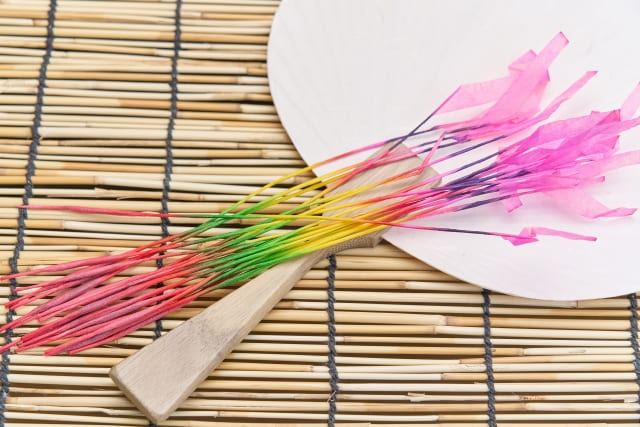
Unlike flashy aerial fireworks, Senko Hanabi is quiet and gentle.
That’s exactly why it’s been a favorite for generations of Japanese people—from small children to the elderly.
It’s easy to enjoy, takes up very little space, and captures the essence of Japanese summer in just a few seconds of glowing beauty.
A Metaphor for Life
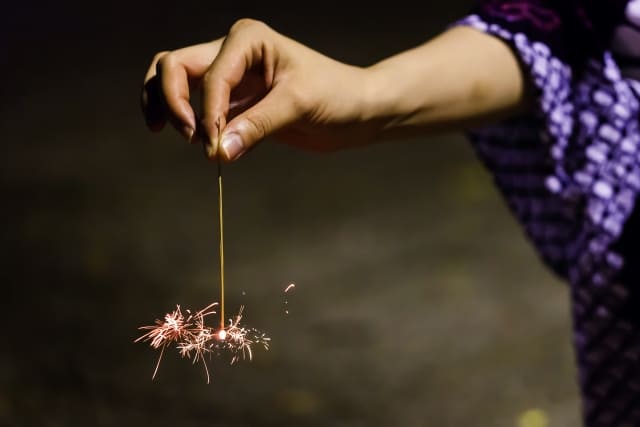
What really sets Senko Hanabi apart is its life-like transformation.
The firework goes through four distinct stages—each with a poetic name—and many believe these stages represent the journey of a human life.

Senko hanabi has such a delicate and fleeting image. Especially when the flame begins to weaken at the end, it can feel a little lonely.

The moment the fireball finally drops makes me feel incredibly sad.
The Four Stages of Senko Hanabi
Although a single Senko Hanabi lasts only about 30 seconds to a minute, it goes through a mesmerizing evolution during that time.
Tsubomi /蕾 (Bud) – The Quiet Beginning
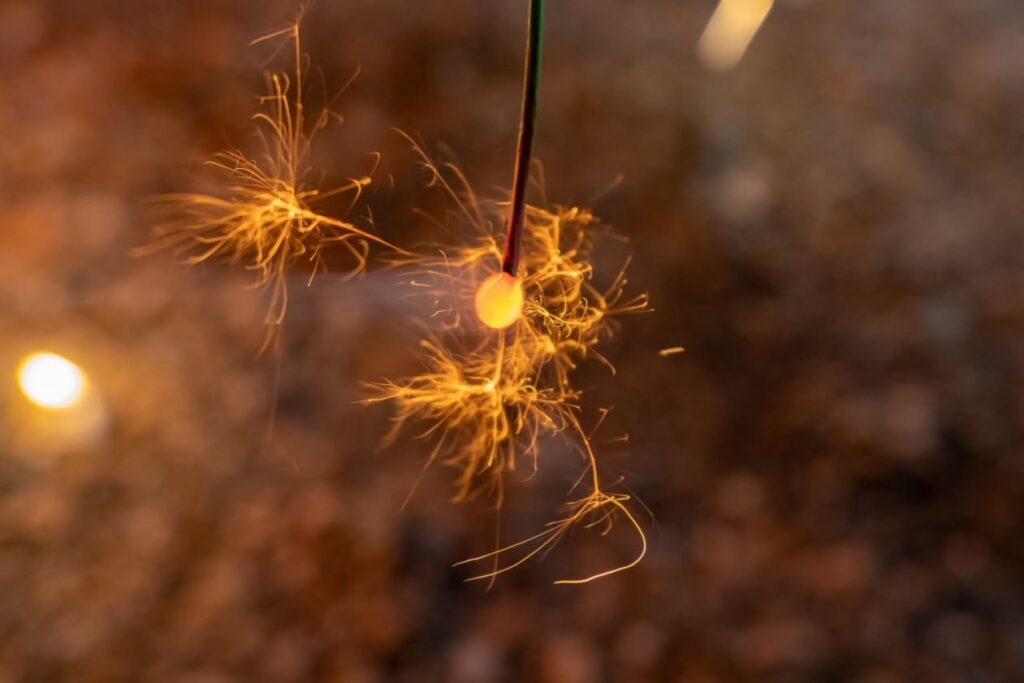
Right after lighting the tip, a small fireball begins to form.
This initial stage is called Tsubomi, meaning “bud,” because it resembles a flower bud before it blooms.
It’s a calm, almost meditative moment—the beginning of something new.

Out of the four stages of senko hanabi, the moment of “Tsubomi” (the bud) is the most exciting for me!
Botan / 牡丹 (Peony) – The Bloom of Youth
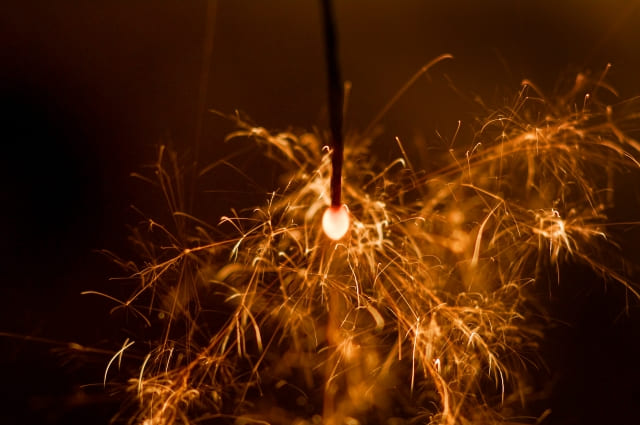
As the fireball grows, it suddenly bursts into energetic sparks.
This lively stage is called Botan, or “peony,” named after the large, beautiful flower.
It represents the most vibrant and dynamic part of life—youth, passion, and movement.

The second stage, “Botan” (peony), is just so vibrant and beautiful!
Matsuba / 松葉 (Pine Needles) – Graceful Maturity

After the explosion of Botan, the sparks become finer and more controlled.
This phase is called Matsuba, or “pine needles,” because the delicate sparks resemble falling needles from a pine tree.
It feels like a more mature stage—still beautiful, but calmer and more graceful.
Chirikiku / 散り菊 (Scattering Chrysanthemum) – A Beautiful Farewell

Eventually, the sparks begin to fade and fall one by one.
This final phase is Chirikiku, or “scattering chrysanthemum,” as it mirrors the gentle fall of chrysanthemum petals.
It’s a slow and quiet ending, and in high-quality Japanese-made Senko Hanabi, this stage is especially long and meaningful.
Many see it as a symbol of life’s peaceful close, wrapped in beauty and acceptance.

The four stages of senko hanabi are sometimes described as botan (peony), matsuba (pine needles), yanagi (willow), and chirikiku (scattering chrysanthemum).
Q&A about Senko Hanabi
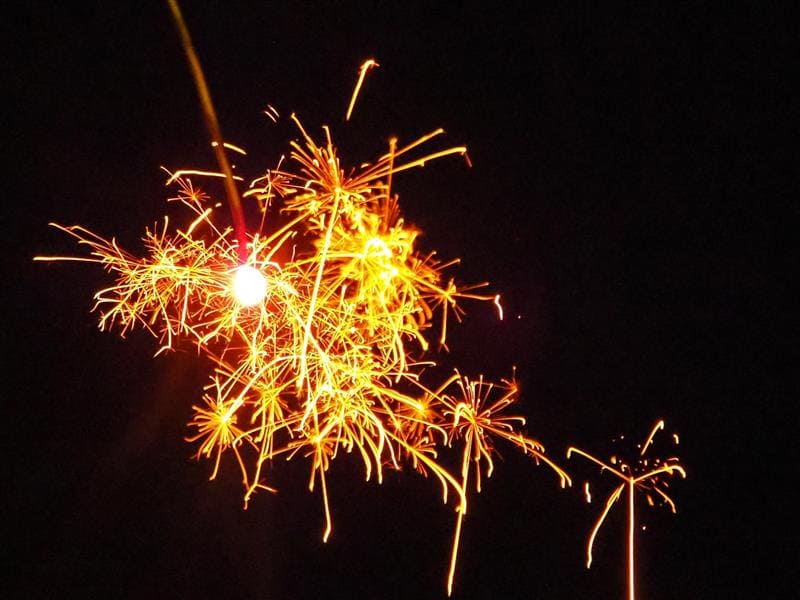
- QWhat’s the difference between Japanese and foreign sparklers?
- A
There’s a big difference!
The four stages we just described—Tsubomi, Botan, Matsuba, Chirikiku—can only really be seen in Japanese-made Senko Hanabi.Foreign sparklers often burn too quickly and miss the delicate transitions that make Senko Hanabi so special.
If you’re looking to experience its poetic beauty, go for a Japanese version!
- QHow do you make Senko Hanabi last longer?
- A
It’s all about the angle and how you light it.
For the best results, light only the tip of the firework at a 45-degree downward angle.This helps the fireball grow properly and gives you the full four-stage experience.
Also, try to use it on a windless night, as wind can disturb the spark and cut the experience short.
Final thoughts about Senko Hanabi
Senko Hanabi is more than just a firework—it’s a quiet celebration of life’s fleeting beauty.
With its long history and four poetic stages, it reminds us that even the briefest moments can be full of meaning.
First created in 1608, this tiny firework continues to capture the hearts of people across Japan.
Whether you’re experiencing it for the first time or reliving a childhood memory, lighting a Senko Hanabi is the perfect way to slow down and connect with the season.
So this summer, find a peaceful spot, light one up, and let the tiny flame tell you its story.
Just like life—it begins softly, blooms brightly, and fades with grace.

Senko hanabi, with its mix of excitement and melancholy, is the perfect way to end the summer.

If you are interested in Japan, you may love these games!

Yes! Let’s play!

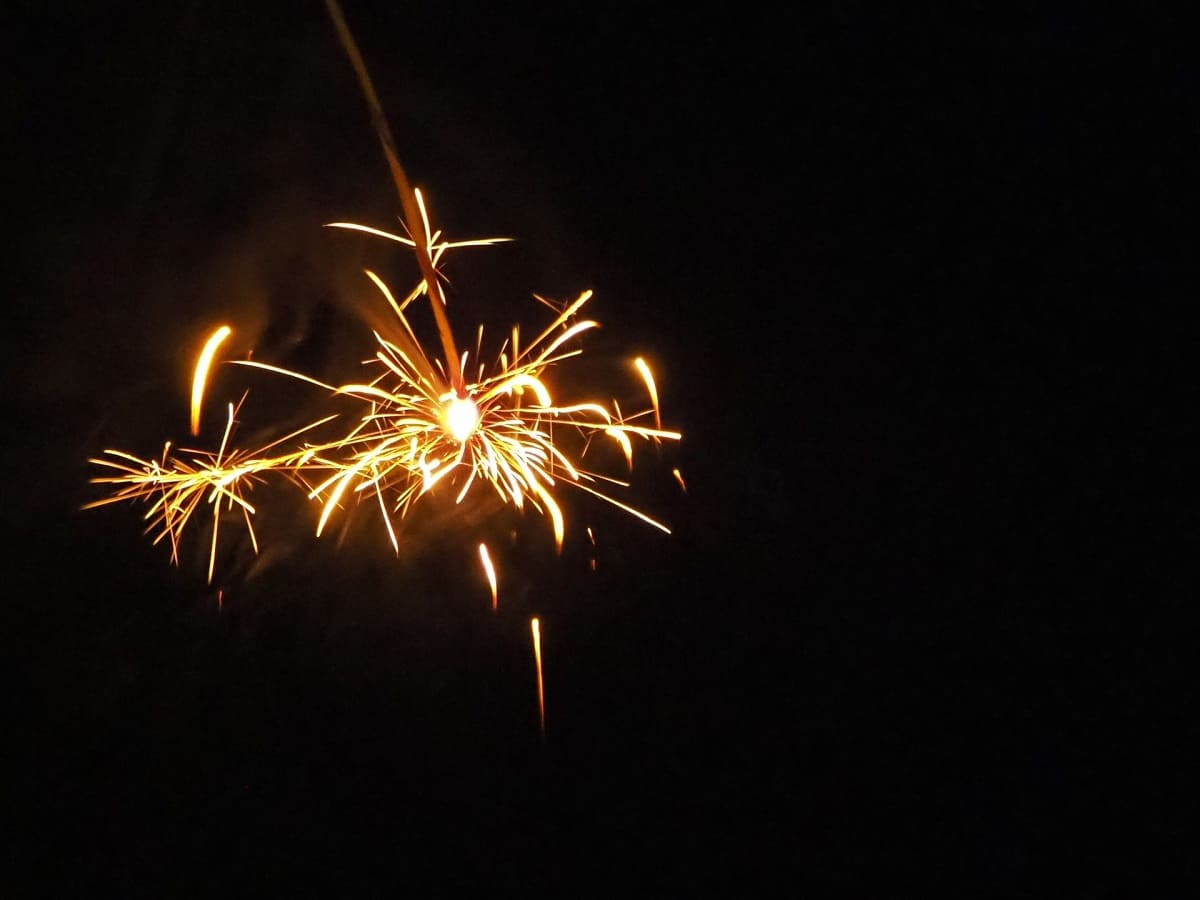




Comments